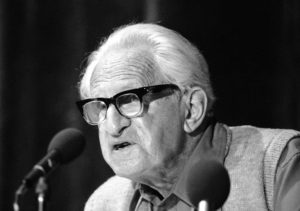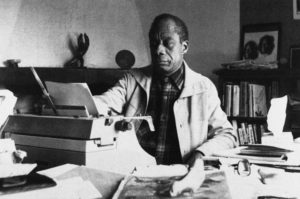Mark Arax on California’s Capitalist Founders
It is said that behind every great fortune there is a crime. Here's a true-life drama of self-invention, greed and ambition involving four larger-than-life men who singly, and together, helped create California. A book to be read after you've watched "There Will Be Blood."
You don’t have to be a fly on the wall to know what the editors and marketers at Atlas Books/W.W. Norton were thinking when they first kicked around the idea of their “Enterprise” series. The question before them was the same one that confounds every book publisher and newspaper in the country today. How to compete in an America besotted with gadgets and gossip? How to tailor stories for a public mind jammed by the racket of cell phones and MySpace?
Whether it is really true that technology’s thrall has changed what people are willing to read, the newspaper where I worked for 20 years, the Los Angeles Times, has already thrown overboard its tradition of literary journalism. Gone are the 10,000-word features and investigative pieces that accounted for so many Pulitzer prizes. So it is understandable, if not entirely laudable, that a publisher such as Atlas/Norton, seeking to widen its audience for business books, would launch a series devoted to the proposition of Narrative Lite.
The execution is rather straightforward. Turn loose some of America’s most engaging writers on epic stories of empire building — the only constraint being that their narratives cannot be epic in scale but rather 200 pages or fewer. If the fit is right, the thinking goes, it doesn’t matter how worn out the subject. This is how Tim Parks came to do the Medici clan, and George Gilder plunged into the Microchip Swashbucklers and Stanley Bing pursued the rise and fall of Rome Inc.
Now comes Richard Rayner, with a novelist’s fine eye, tackling the tale of four men — the fixer, the politician, the contractor and the accountant, otherwise known as Huntington, Stanford, Crocker and Hopkins — whose improbable railroad, the Central Pacific, connected the American West to the world. At the outset, Rayner, the author of one other work of nonfiction and five novels, sweats a little too much trying to justify a story told with far more deliberation in a score of previous books, including Oscar Lewis’ “The Big Four” (1938), David Lavender’s “The Great Persuader” (1970) and David Haward Bain’s “Empire Express” (1999).
“It’s been told many different ways,” Rayner writes in “The Associates: Four Capitalists Who Created California.” “As a kind of triumph of will, guts, and the American can-do spirit over almost unimaginable difficulty and danger; as a tragedy involving the virtual elimination of Native American culture; as a race between Irish navvies of the Union Pacific laying track from the east and the Chinese coolies of the Central Pacific advancing from the west.
“All these versions have some validity. But really it’s a story about cash, about rapacity. The railroad was built — actually built, as opposed to dreamed of and talked about — by men who cared only about money and were absolutely ruthless about money. They didn’t care about the railroads as such. They wanted to line their own pockets, to do business.”
Hype more or less out of the way, Rayner begins his energetic portraits of the four merchants — also known as The Associates — who had come to California not to dig gold from the earth but to sell the pickaxes and shovels, at rip-off prices. It is a treat to watch a writer have fun with his subjects, and Rayner has great fun bringing to life Collis Huntington on the East Coast, tickling the palms of congressmen, and Charles Crocker on the western slope of the Sierra, directing 8,000 Chinese in a triumph of engineering that reads no less mind-boggling for the 150 years of feats that have followed.
“No railroad in the world had tackled anything like this before,” he writes. “Crossing the Sierra became the CP’s epic. The drifts were so deep that five locomotives coupled together could not push them aside. There were forty-four storms; temperatures dropped to thirty below. The hard granite in the tunnels bent steel drills like licorice. Ten inches a day was excellent progress. Many days saw the tunnel grow by only two or three inches.”
Mammoth, too, was the swindle by the Central Pacific and Union Pacific, headed by Thomas Clark Durant, mastermind of one of the truly ingenious shell games in American history. Reading how easy it was for the two behemoths to hoodwink a federal government predisposed to the righteousness of a transcontinental railroad and preoccupied with civil war, you cannot help but recognize a strange inevitability to the family of crimes and criminals to follow. So this was the forebear of the monumental frauds of, say, Halliburton.
Robber barons and their monopolies, Huntington would concede, are part of America’s DNA. Capitalism was not meant to be democratic. “It seems to be assumed that competition, which may be called a state of war of capital, is a good thing in itself, and is to be promoted and intensified by Acts of Legislature,” Huntington said. “Competition is killing.”
The easy criticism would be that for a story so grand, 200 pages is a piffle. But I read it in the same spirit that I travel the interstate, to get from vista to vista without a whole lot of meanderings in the middle. That is not to say that Rayner doesn’t manage several scenic byways. There are wonderful side portraits of Theodore Judah, whose harebrained scheme it was to traverse the Sierra with rail, and Ambrose Bierce, the San Francisco writer whose attacks on a decrepit Huntington are perfectly scabrous:
“The spectacle of this old man standing on the brink of eternity, his pockets loaded with dishonest gold which he knows neither how to enjoy nor to whom to bequeath, swearing it is the fruit of wholesome labor and homely thrift, was one of the most pitiable it has been my lot to observe. He knows himself an outmate of every penal institution in the world; he deserves to hang from every branch of every tree of every state and Territory penetrated by his railroads, with the sole exception of Nevada, which has no trees.”
Rayner packs a lot into compressed space without ever making the story feel crowded. To indulge in the thinking of the day, it is just such a breezy and smart account that a kid in high school might be required to read and, finding himself sufficiently enthralled, might work his way back to the tomes. But if those heavier volumes are not forthcoming, the kid could do far worse than Rayner’s account as the final word on the railroad that made the West.
Mark Arax, author and journalist, is finishing his third book, a collection of essays on California to be published by PublicAffairs. He is the author (along with Rick Wartzman) of “The King of California: J.G. Boswell and the Making of a Secret American Empire,” also published by PublicAffairs.
Your support matters…Independent journalism is under threat and overshadowed by heavily funded mainstream media.
You can help level the playing field. Become a member.
Your tax-deductible contribution keeps us digging beneath the headlines to give you thought-provoking, investigative reporting and analysis that unearths what's really happening- without compromise.
Give today to support our courageous, independent journalists.







You need to be a supporter to comment.
There are currently no responses to this article.
Be the first to respond.